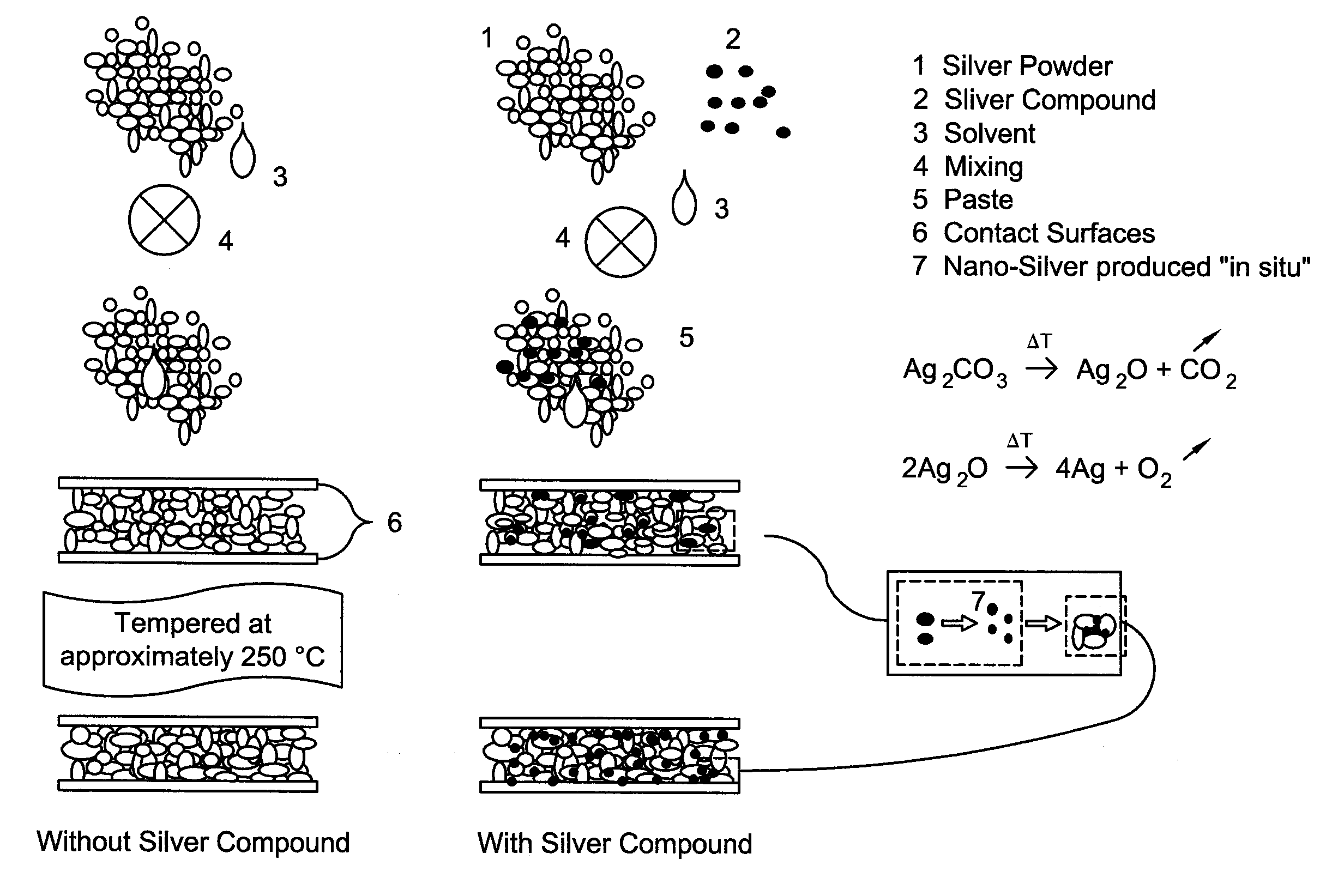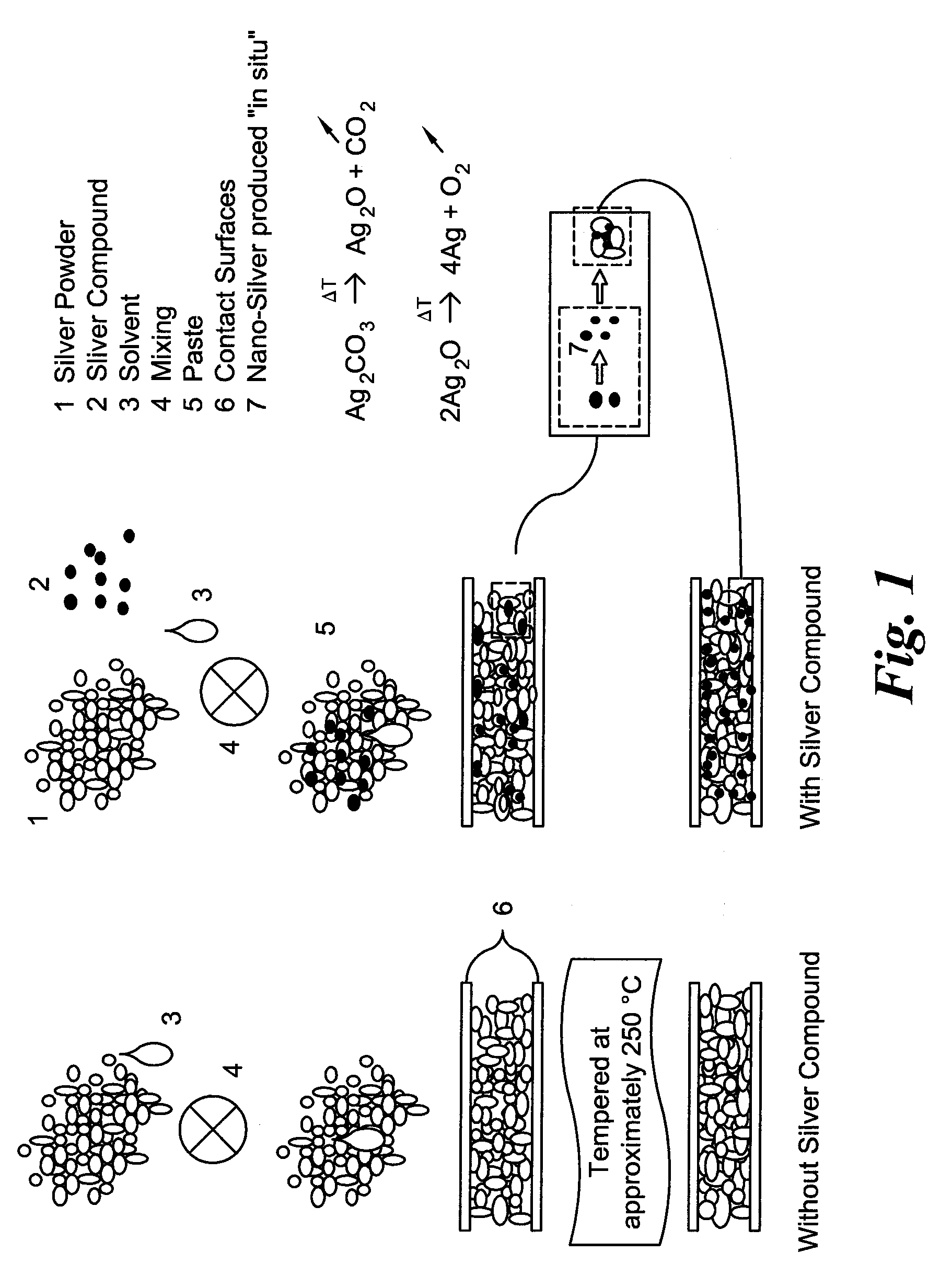Controlling the porosity of metal pastes for pressure free, low temperature sintering process
a technology of porosity and metal paste, which is applied in the direction of soldering apparatus, manufacturing tools, and capacitors, etc., can solve the problems of inability to use conventional low temperature sintering, excessive effort, and unsuitable contact area for thermal conductivity or electrical conductivity, etc., and achieve the effect of keeping temperature and process pressure low during compaction
- Summary
- Abstract
- Description
- Claims
- Application Information
AI Technical Summary
Benefits of technology
Problems solved by technology
Method used
Image
Examples
example 1
[0078]A metal paste which contained 83 percent by weight of silver, 5 percent by weight of silver carbonate and 12 percent by weight of 1-tridecanol was printed onto a surface of a lead frame. Subsequently, a die with a surface area of 8 mm2 was placed onto the metal paste. The wet layer thickness was 50 μm. Subsequently, the assembly thus obtained was dried for 20 minutes at 100° C. Sintering took place at a process pressure of 0 bar and a process temperature of 250° C. for a period of 45 minutes.
example 2
[0079]A metal paste which contained 83 percent by weight of silver, 5 percent by weight of silver carbonate and 12 percent by weight of 1-tridecanol was printed onto a surface of a lead frame using the dispense technique. Subsequently, an LED with a surface area of 9.2 mm2 was placed onto the metal paste. The wet layer thickness was 50 μm. Subsequently, the assembly thus obtained was dried for 20 minutes at 100° C. Sintering took place at a process pressure of 0 bar and a process temperature of 250° C. for a period of 45 minutes.
PUM
| Property | Measurement | Unit |
|---|---|---|
| boiling point | aaaaa | aaaaa |
| boiling point | aaaaa | aaaaa |
| decomposition temperature | aaaaa | aaaaa |
Abstract
Description
Claims
Application Information
 Login to View More
Login to View More - R&D
- Intellectual Property
- Life Sciences
- Materials
- Tech Scout
- Unparalleled Data Quality
- Higher Quality Content
- 60% Fewer Hallucinations
Browse by: Latest US Patents, China's latest patents, Technical Efficacy Thesaurus, Application Domain, Technology Topic, Popular Technical Reports.
© 2025 PatSnap. All rights reserved.Legal|Privacy policy|Modern Slavery Act Transparency Statement|Sitemap|About US| Contact US: help@patsnap.com



